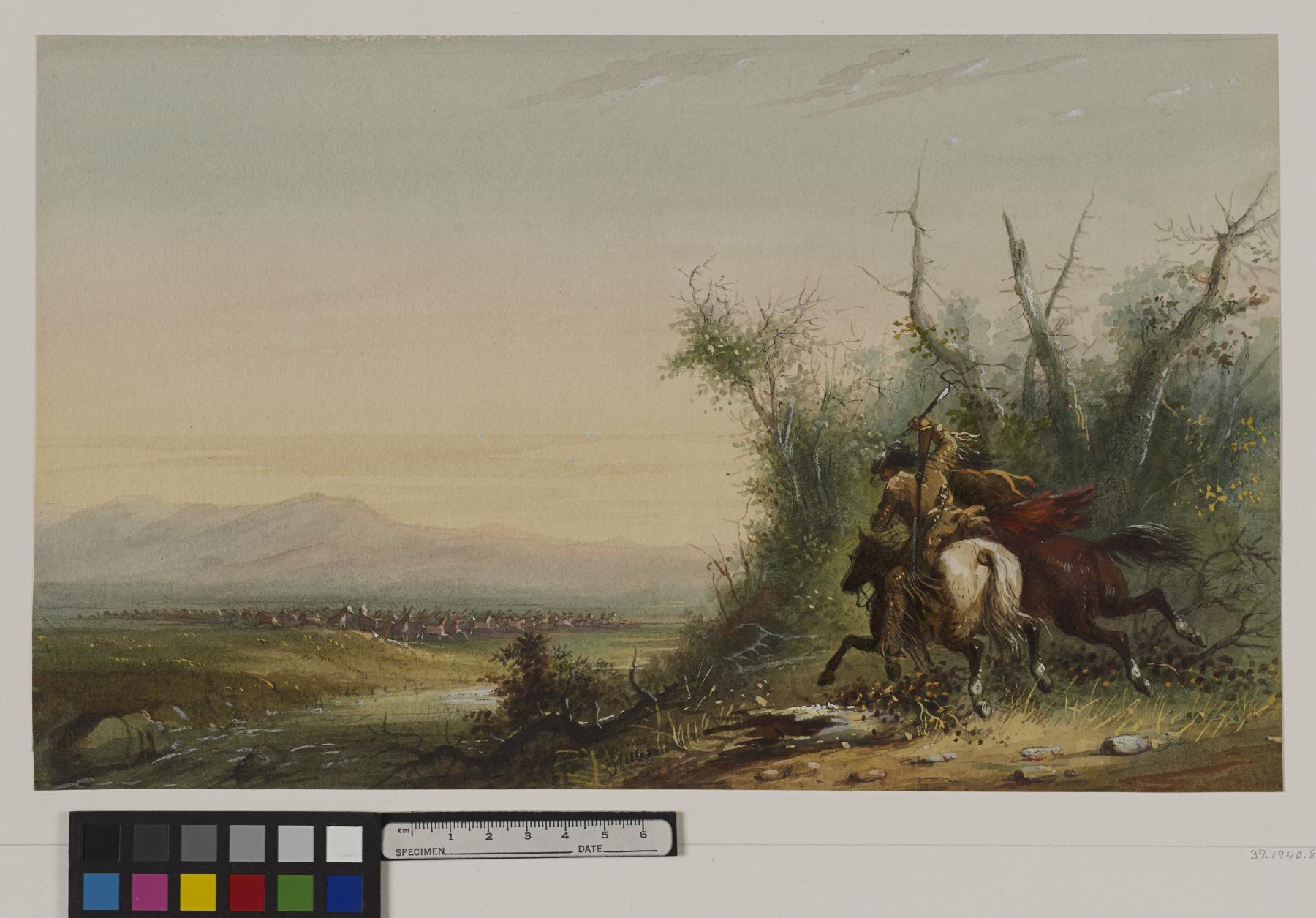A Herd of Antelopes
(18th and 19th Centuries )
Extracts from Alfred Jacob Miller’s original text, which accompanied his images of Native Americans, are included below for reference.
"The hunters are here taking an advantage of a peculiar trait, of failing of these animals. A large number are in sight, and although they have taken the alarm, and the greater part are in full retreat,- yet a few remain gazing in stupid curiosity at the approaching hunters. The latter seeing this push on with all speed in the hope of getting a shot at them before they can recover from this apparent trance. It is perfectly useless to run them when they once start, as their speed far outstrips the fleetest horses. When about half a dozen men are in the field, by a process called 'ringing Antelopes,' they capture a goodly number. The first object after discovering the band is to get a party on every side of them;- when the herd puts itself in motion, the hunter in the direction to which it tends, gallops forward and the timid animals dart off at another angle to be frightened by the same apparition in that quarter,- it is coninued until theyr are exhausted, when the hunters close in and shoot: - this seems to recall their scattered senses, when all not wounded, take courage, make a charge through the circle, and are gone in a moment." A.J. Miller, extracted from "The West of Alfred Jacob Miller" (1837).
In July 1858 William T. Walters commissioned 200 watercolors at twelve dollars apiece from Baltimore born artist Alfred Jacob Miller. These paintings were each accompanied by a descriptive text, and were delivered in installments over the next twenty-one months and ultimately were bound in three albums. Transcriptions of field-sketches drawn during the 1837 expedition that Miller had undertaken to the annual fur-trader's rendezvous in the Green River Valley (in what is now western Wyoming), these watercolors are a unique record of the closing years of the western fur trade.
Inscription
Provenance
Provenance (from the French provenir, 'to come from/forth') is the chronology of the ownership, custody, or location of a historical object. Learn more about provenance at the Walters.
William T. Walters, Baltimore, 1858-1860, by commission; Henry Walters, Baltimore, 1894, by inheritance; Walters Art Museum, 1931, by bequest.
Conservation
| Date | Description | Narrative |
|---|---|---|
| 4/1/1950 | Treatment | cleaned |
Geographies
USA (Place of Origin)
Measurements
7 5/8 x 12 7/8 in. (19.4 x 32.7 cm)
Credit Line
Commissioned by William T. Walters, 1858-1860
Location in Museum
Not on view
Accession Number
In libraries, galleries, museums, and archives, an accession number is a unique identifier assigned to each object in the collection.
In libraries, galleries, museums, and archives, an accession number is a unique identifier assigned to each object in the collection.
37.1940.89







